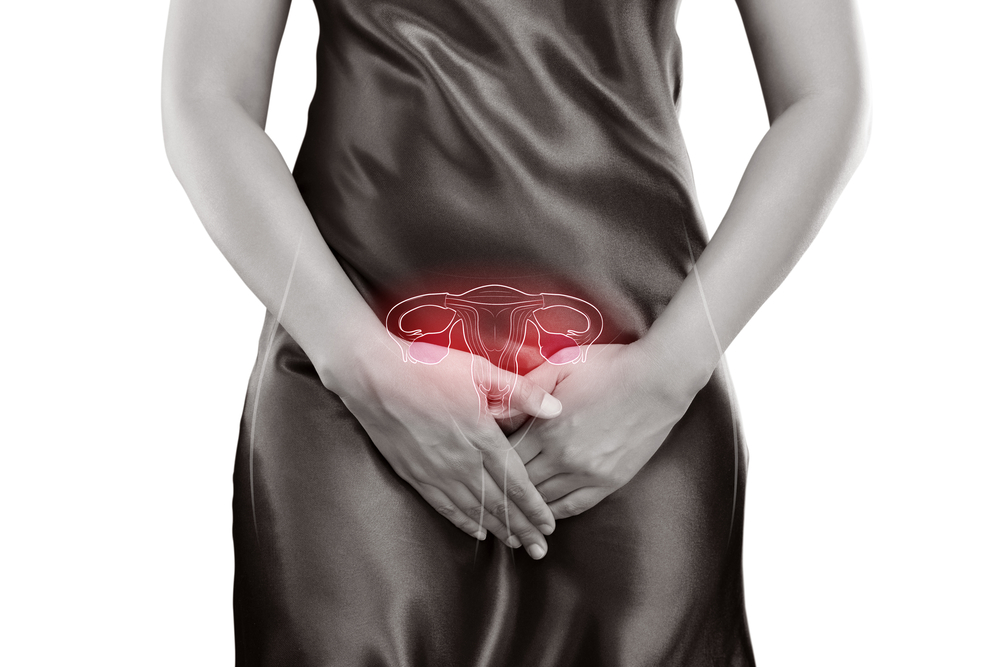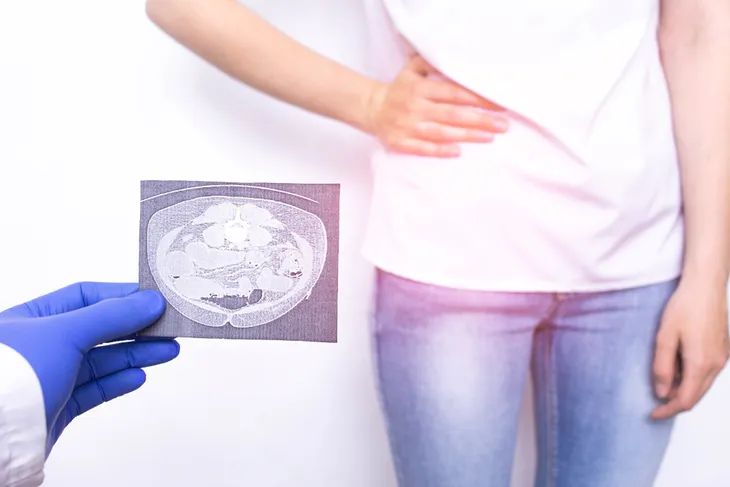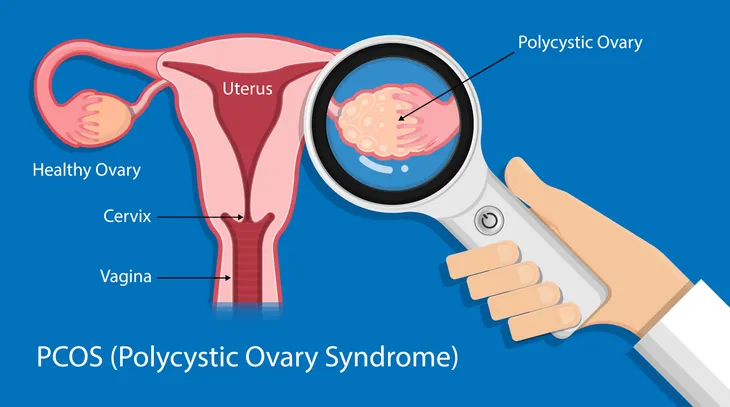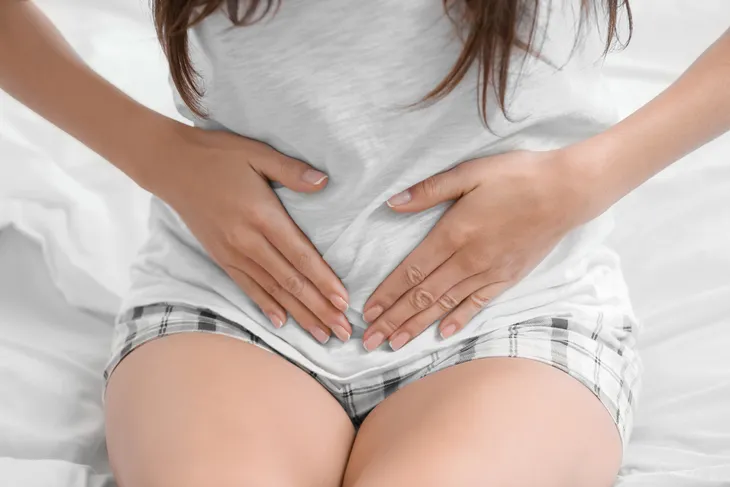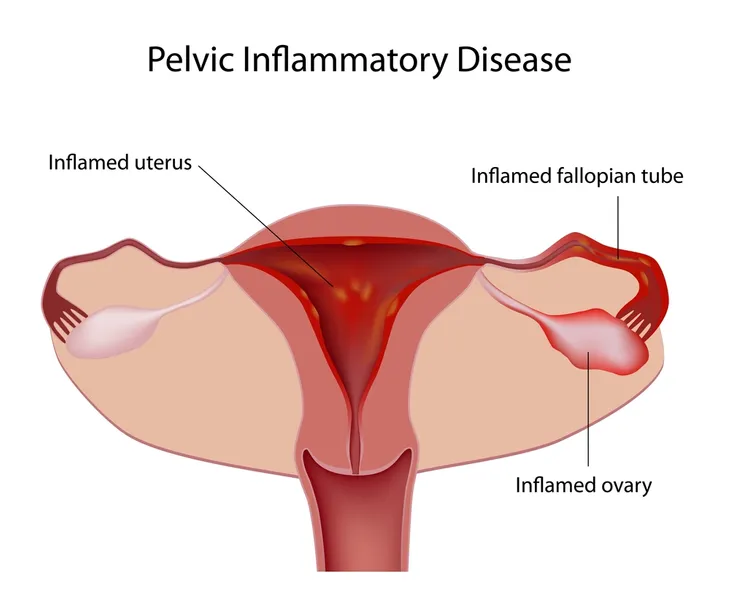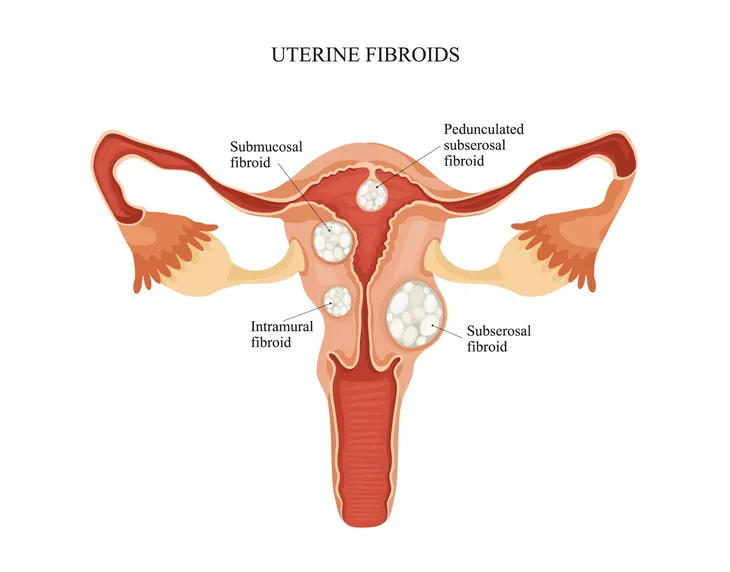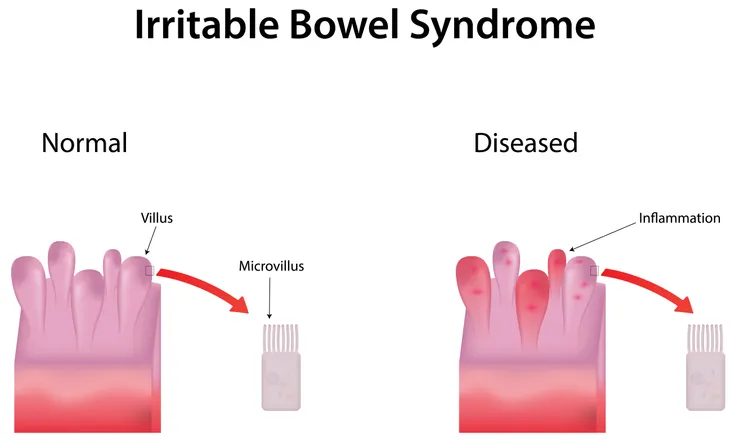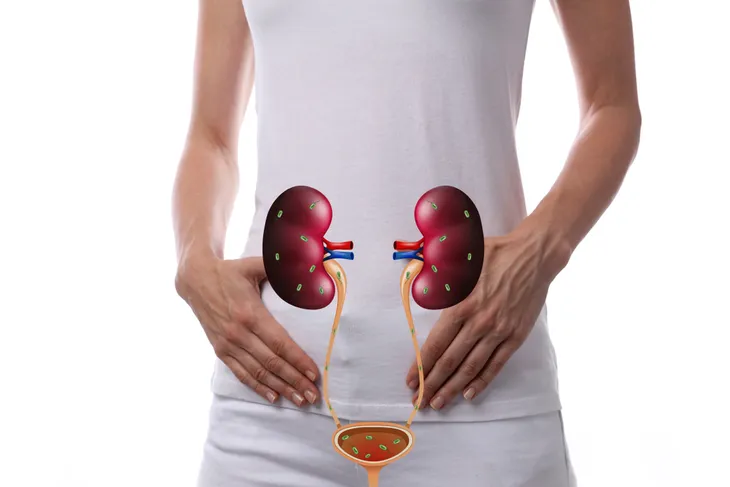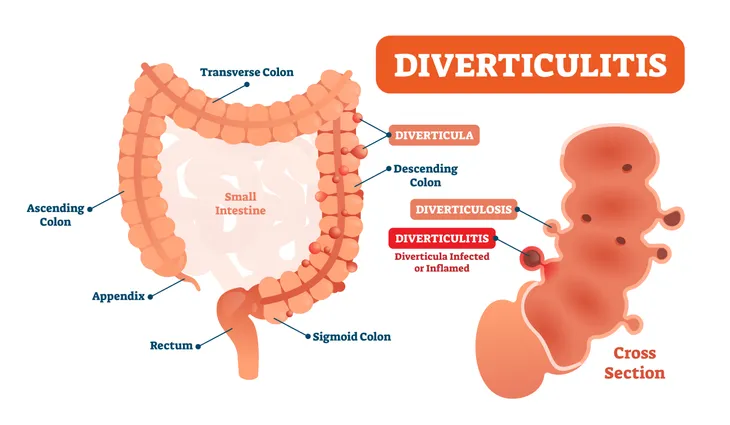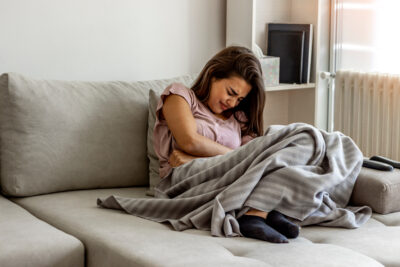Acute pelvic pain may be defined as pain inferior (below) to the belly button and superior (above) to the legs lasting less than three-months. It can be associated with a vast array of conditions involving the reproductive, urinary, gastrointestinal, or musculoskeletal systems. As a result, acute pelvic pain can present a clinical challenge to medical professionals. Acute pelvic pain can have many characteristics—sharp or dull, intermittent or constant, and mild, moderate, or severe. It may also radiate to the thighs, lower back, or buttocks. Some causes of acute pelvic pain may threaten the life or fertility of women.
Twelve causes of acute pelvic pain in women are…
1. Appendicitis
Appendicitis represents inflammation of the appendix, which is a worm-like structure projecting from the lower right side of the colon. The appendix has no known function. Appendicitis is most likely caused by an obstruction of the appendix leading to an infection. Symptoms of the condition may include pain in the right lower side of the abdomen, nausea, vomiting, fever, loss of appetite, and diarrhea or constipation.
Treatment of appendicitis usually entails an appendectomy, which is the surgical removal of the appendix. The surgery can be executed in an open manner (which involves one long abdominal incision) or via laparoscopy (which involves several small abdominal incisions enabling the insertion of surgical tools and a camera). Surgery via laparoscopy has been shown to lead to a faster recovery with less scarring and pain. Complications of the condition may include the rupture of the appendix leading to peritonitis (infection throughout the abdomen).
2. Ovarian Torsion
Ovarian torsion refers to twisting of the ovary. It represents a surgical emergency as it can lead to ovarian swelling, ischemia (inadequate blood supply), and necrosis (death of cells). Ovarian torsion may occur spontaneously or as the result of pregnancy or ovarian tumors. Symptoms may include right or left sided lower abdominal pain, nausea, vomiting, and fever. The abdominal pain is most commonly right sided, which causes diagnostic confusion between it and appendicitis.
Treatment of ovarian torsion usually involves surgery via laparoscopy to untwist the affected ovary. Complications of ovarian torsion may include peritonitis, infertility, adhesions (an abnormal union of membranous surfaces in the body), sepsis (a bacterial blood infection), and chronic pelvic pain. With early diagnosis and treatment, the prognosis for ovarian torsion is excellent.
3. Ectopic Pregnancy
An ectopic pregnancy occurs when a fertilized egg implants outside of the uterus. Normally, the fertilized egg implants in the inner lining of the uterus, which is called the endometrium. Approximately 95-percent of ectopic pregnancies occur in the fallopian tubes, which is why the condition is also known as a tubal pregnancy. Classical symptoms of ectopic pregnancy include abdominal/pelvic pain, amenorrhea (absence of a menstrual cycle), and vaginal bleeding. Other symptoms may include dizziness, fever, nausea, vomiting, and fainting.
Ectopic pregnancy may be treated medically or surgically. Medical treatment is useful in specific patients and entails the administration of a single or multiple injections of a medication called methotrexate. It results in the cessation of fetal cell growth and causes the disintegration of existing fetal cells. Surgical treatment may be accomplished by creating an opening in the fallopian tube and evacuating the fetal cells or complete removal of the fallopian tube. Without treatment, an ectopic pregnancy can lead to a ruptured fallopian tube and life threatening bleeding.
4. Ovarian Cysts
Ovarian cysts are fluid-filled pockets existing within or on the surface of an ovary. Many women have ovarian cysts at some stage of their life. Most ovarian cysts are a product of the normal functioning of a woman’s menstrual cycle. Most ovarian cysts produce no symptoms and disappear within a few months without treatment. If symptomatic, ovarian cysts may cause pelvic pain, nausea, vomiting, pain with intercourse (dyspareunia), abdominal bloating, difficulty having bowel movements, heartburn, and urinary frequency.
Options for the treatment of ovarian cysts include watchful waiting, birth control pills, or surgery. Watchful waiting is a reasonable option since many ovarian cysts are found to have resolved after reexamination in two or three-months. Complications of ovarian cysts may include rupture or torsion, both of which are surgical emergencies. The prognosis for benign (noncancerous) ovarian cysts is excellent.
5. Endometriosis
Endometriosis refers to the abnormal presence of endometrial tissue outside of the uterus. Endometrial tissue is normally only found lining the uterus. The exact cause of endometriosis is not certain. Risk factors for the development of the condition include a family history, never giving birth, previous pelvic infections, and abnormalities of the uterus. Symptoms of endometriosis may include pelvic pain, painful periods (dysmenorrhea), pain with intercourse (dyspareunia), heavy periods (menorrhagia), nausea, and abdominal bloating.
Treatment for endometriosis may be medical or surgical. Medical treatment is usually hormonal therapy with birth control pill, medroxyprogesterone, gonadotropin-releasing hormone (GnRH) analogs, or danazol. Surgical treatment can be conservative to preserve fertility. In severe cases, surgical removal of the entire uterus (total hysterectomy) and both ovaries is undertaken. Radical surgery is often a last resort as women cannot bear children after a total hysterectomy. The primary complication of endometriosis is impaired fertility.
6. Pelvic Inflammatory Disease
Pelvic inflammatory disease (PID) is an infection of the female reproductive tract. It can spread from the vagina to the uterus, fallopian tubes, or ovaries. The disease is most often caused by sexually transmitted infections (STIs) such as chlamydia or gonorrhea, which often produce no initial symptoms in women. The primary risk factor for the development of PID is unprotected sex. Symptoms of PID may include pelvic pain, vaginal discharge, fever, irregular menstrual bleeding, pain with intercourse (dyspareunia), and painful urination (dysuria).
Treatment of PID requires antibiotics, and in severe cases hospitalization. All sexual partners should be treated to prevent reinfection and sexual intercourse should also be avoided while under treatment. PID is the number one preventable cause of infertility in women. Other complications may include tubo-ovarian abscess (TOA), ectopic pregnancy, and chronic pelvic pain.
7. Uterine Fibroids
Uterine fibroids are benign (noncancerous) tumors of the uterus. The tumors may occur in or on the muscular layer of the uterus called the myometrium. They are the most common neoplasm (abnormal growth of tissue) found in the female reproductive system. The exact cause of uterine fibroids is unknown. Symptoms of uterine fibroids may include pelvic pain, heavy periods (menorrhagia), painful periods (dysmenorrheal), urinary frequency, and constipation.
Several treatment options exist for symptomatic uterine fibroids—myomectomy, uterine artery embolization, and hysterectomy. Myomectomy involves the surgical removal of fibroids. Uterine artery embolization involves injecting particles that cut off the blood supply to fibroids, causing them to die and shrink. A hysterectomy involves removal of the uterus. Complications of fibroids may include iron deficiency anemia due to heavy blood loss. Rare complications may include pregnancy loss or infertility.
8. Mittelschmerz
Mittelschmerz refers to pain associated with ovulation. The term is German for “middle pain.” Ovulation is when the ovaries release an egg, or ovum, which typically occurs around day 14 or 15 of the menstrual cycle. The exact cause of mittelschmerz is unknown. Symptoms of mittelschmerz may include unilateral (one-sided) pain in the lower abdomen or pelvis and vaginal bleeding. The pain is often dull and cramping and rarely severe. Symptoms may occur monthly or occasionally.
Treatment of mittelshmerz may require over-the-counter pain relievers such as aspirin, ibuprofen (Advil, Motrin), or naproxen (Aleve). For severe symptoms, oral contraceptives may be prescribed to prevent ovulation and the occurrence of pain. Approximately 20-percent of women suffer with the condition. If treatment is required, the prognosis for mittelschmerz is excellent.
9. Irritable Bowel Syndrome
Irritable bowel syndrome (IBS) is a common condition affecting the colon, or large intestine. It is twice as likely to affect women. The exact cause of the condition is unknown. Common triggers for IBS may include foods, stress, hormones, or other illnesses. Foods implicated include chocolate, alcohol, spices, milk, and carbonated beverages. Symptoms of IBS may include abdominal or pelvic pain, bloating, gas, abdominal cramping, and diarrhea or constipation. Risk factors for IBS include young age, being female, a family history of IBS, and mental disorders.
The treatment of IBS may include dietary changes and medications. Dietary changes consist primarily of food elimination. For example, eliminating gluten and lactose from the diet. Medications may include fiber supplements, antibiotics, and agents to fight diarrhea and cramping associated with IBS. Antidepressant medications and counseling may be recommended to appropriate candidates. Currently, two medications are approved for the specific treatment of IBS—alosetron (Lotronex) and lubiprostone (Amitiza). Complications of IBS may include hemorrhoids and nutritional deficiencies.
10. Urinary Tract Infection
A urinary tract infection (UTI) refers to an infection some place in the urinary system. The urinary system consists of kidneys, ureters (tubes that carry urine from the kidney to the bladder), bladder, and urethra (tube leading from the bladder to the exterior of the body). The most common cause of a UTI is the bacteria E. coli, which is commonly found in the intestines. Women contract UTIs at a greater rate than men, due to the short distance between the anus and urethra lends itself to bacterial contamination.
Symptoms of a UTI may include painful urination (dysuria), pelvic pain, urinary frequency, blood in the urine (hmaturia), and foul-smelling urine. Antibiotics are the primary treatment for UTIs. For women with frequent infections, prevention may be provided with low dose antibiotics for 6-months or more. Intravenous antibiotics should be considered for severe UTIs. Complications of UTIs may include recurrent infections, kidney damage, urethral narrowing, and sepsis (a bacterial blood infection). In pregnant women, UTIs increase the likelihood of a low birth weight infant.
11. Diverticulitis
Diverticulitis refers to inflammation of one or more diverticula, which are pouch-like pockets that develop in the colon, or large intestine. Divericula appear to be associated with a low-fiber diet, obesity, and constipation. When one or more diverticula in the colon rupture, it results in inflammation, infection, or both (termed diverticulitis). Symptoms of diverticulitis may include left-sided lower abdominal pain, nausea, vomiting, fever, and diarrhea or constipation.
Treatment of uncomplicated diverticulitis entails oral antibiotics and dietary changes. Complicated diverticulitis may require intravenous antibiotics and rarely surgery. Complications of diverticulitis may include abscess, bowel obstruction, bowel rupture, or fistula (an abnormal passageway between an organ and body surface or between two organs. A fistula is usually the result of a resolving abscess. Bowel rupture may lead to peritonitis, which is inflammation of the membrane covering the organs of the abdomen and considered a medical emergency.
12. Intestinal Obstruction
Intestinal obstruction refers to the blockage of liquid or food from passing through the small or large intestine. The two most common causes of intestinal obstruction are colon cancer and adhesions (bands of scar tissue that form after abdominal or pelvic surgery). Other causes may include diverticulitis, inflammatory bowel disease (Crohn disease or ulcerative colitis), hernias, and twisting of the colon (volvulus). Symptoms of intestinal obstruction may include crampy abdominal/pelvic pain, nausea, vomiting, constipation, bloating, and inability to pass gas.
Treatment of intestinal obstruction frequently requires hospitalization and may entail intravenous (IV) lines for fluids, a nasogastric tube to relieve abdominal bloating, and insertion of a catheter into the bladder to drain urine. Treatment would also be directed toward the underlying cause of the intestinal obstruction. Complications of intestinal obstruction may include dehydration, abscess, intestinal rupture, peritonitis, pneumonia, sepsis (a bacterial blood infection), and death.
